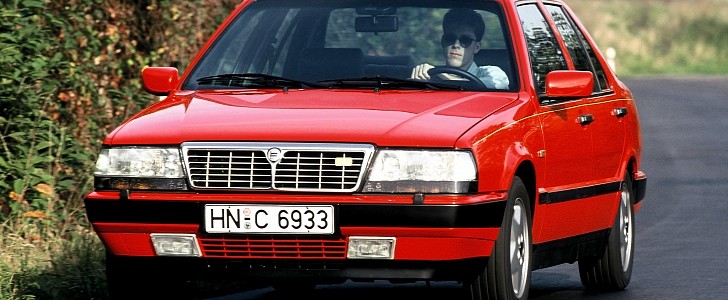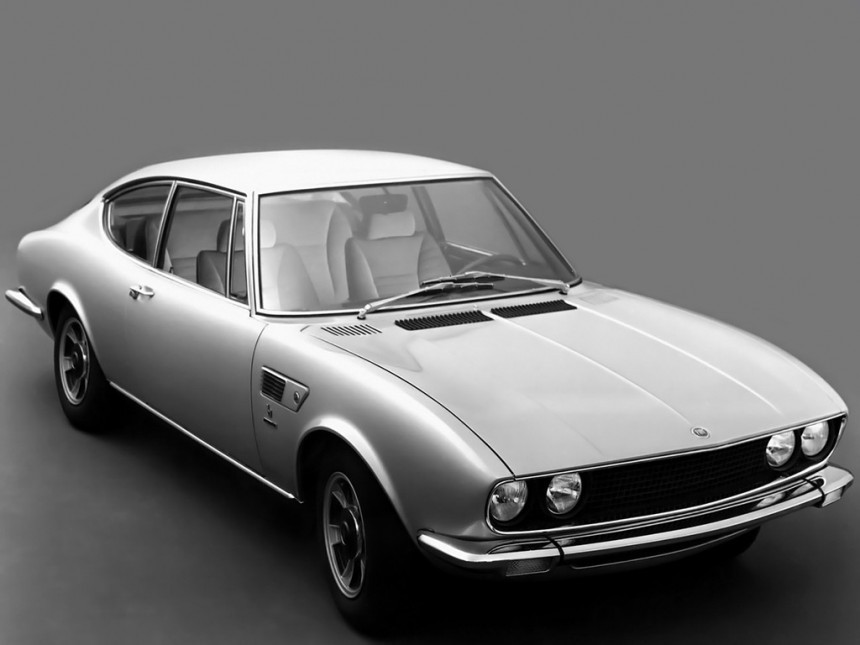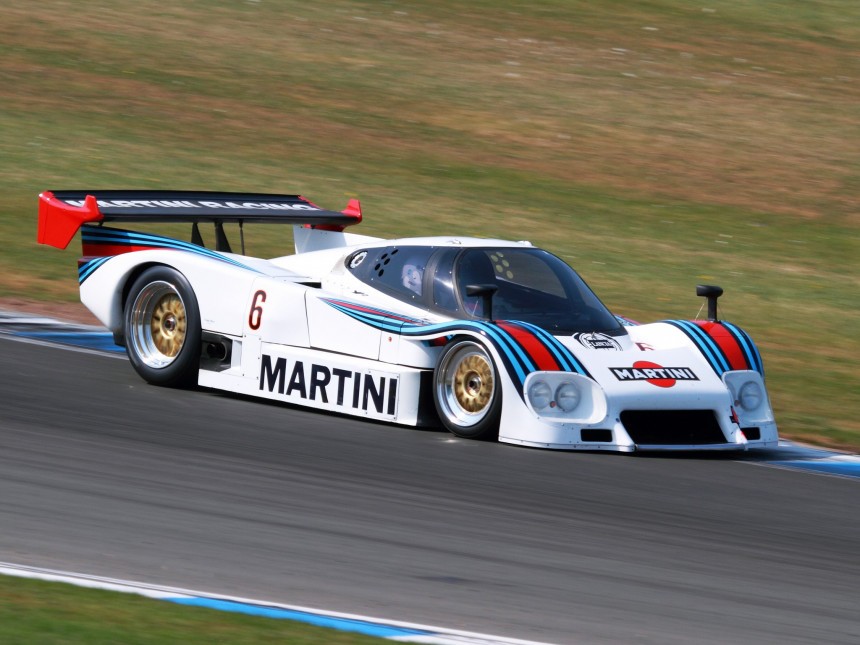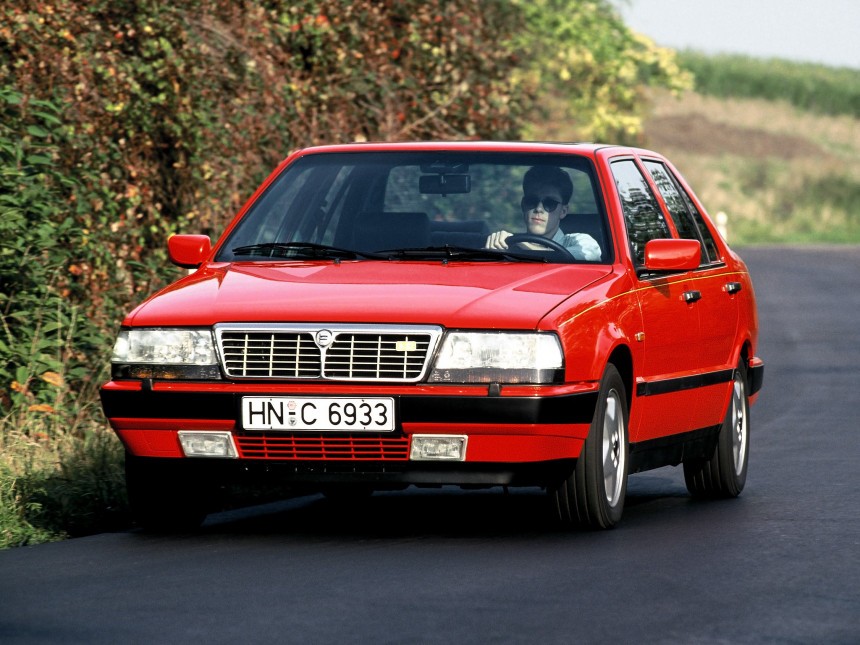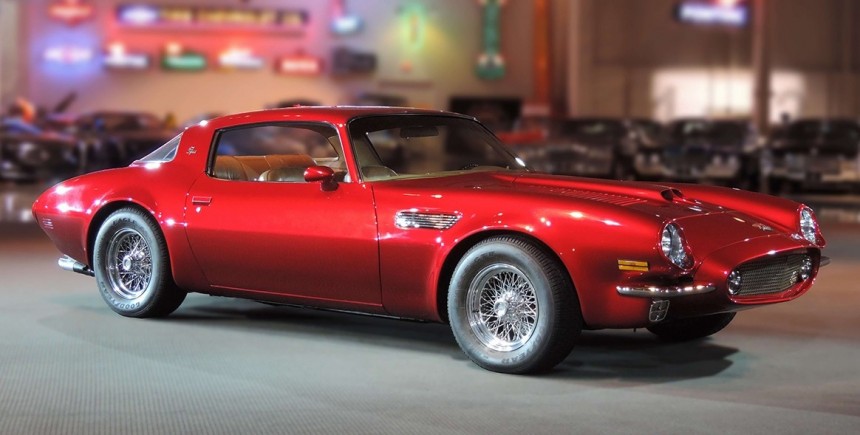From V8s to V12s, Ferrari has built some of the greatest high-performance engines over the years. Luckily, some of them were outsourced by Maranello, so we can find them in cars from other brands, particularly modern Maseratis and even an Alfa Romeo.
The Dino, albeit a Ferrari, can also be included here as it never featured a Prancing Horse badge. However, the Dino is pretty famous, as is the Lancia Stratos. But other cars didn't make as many headlines, despite using powerful and brilliantly engineered Ferrari engines. So here they are.
Internally called Ferrarina, the experimental GT was inspired by the 250 GT and resembled Ferraris of the era. Designed as a high-volume production model that would fund Ferrari's racing efforts, the Ferrarina was originally projected to spawn more than 3,000 units. But since the Maranello factory wasn't big enough for that kind of output, Enzo opted to outsource the model to a different automaker.
Long story short, it was entrusted to Oronzio de Nora, Enzo's close friend, who established Autocostruzioni Societa per Azioni (ASA) to build the car. It rolled off the assembly line as the ASA 1000 GT in 1964 with a 1.0-liter four-cylinder engine rated at 95 horsepower.
Although it was cheaper than a 250 GT, the Ferrarina was still notably more expensive than most sports cars and GTs of the era and sales didn't take off. ASA built only around 90 units from 1964 to 1967 and many of them were sold for a third of their initial sticker. The 1000 GT remained somewhat anonymous until recent years, when they started gaining traction on the classic car market. Unless Ferrari introduces a four-cylinder in the future, the 1000 GT will remain the only road going car ever fitted with a four-banger designed in Maranello.
Designed by Giorgetto Giugiaro, who also penned the Ferrarina, the 186 GT was fitted with a 1.8-liter V6 engine. Essentially half of a period Ferrari V12, the V6 produced 154 horsepower through a four-speed manual transmission. A second, improved prototype was completed in 1964, but the project was eventually halted and the 186 GT never made it into production.
Word has it Innocenti cancelled the 186 GT due to the Italian recession of 1964-1965, but also because its small dealer network was not adequate for the distribution of an upscale car. Of the two prototypes, only one survived, having been saved when the Innocenti factory was demolished in 1986.
The mill actually debuted in a Fiat in 1966. Also sporting the Dino name, the Italian sports car arrived with a 2.0-liter V6. The reason why the engine debuted in a Fiat is because Ferrari wanted it installed into a relatively high-volume car to hit the production goal needed to homologate the V6 for racing.
Available as a coupe designed by Bertone and a convertible penned by Pinninfarina, the initial 2.0-liter Dino came with 158 horsepower on tap. In 1969, the Dino was upgraded to a 2.4-liter engine good for 178 horsepower. Both engines were eventually shared with Ferrari's identically named sports car. From 1969 to 1973, the Fiat Dino was assembled in Maranello on Ferrari assembly line. Around 7,800 Fiat Dinos were built in seven years.
But as the FIA replaced Group 6 with new Group C regulations for 1982, Lancia started working on another car, the LC2. Redesigned from a clean sheet, the LC2 did not adopt the LC1's four-cylinder engine. Instead, Lancia went with a twin-turbo V8 developed by Ferrari. Originally displacing 2.6 liters, the mill was enlarged to 3.0 liters in 1984. In its final iteration, the V8 produced up to 850 horsepower and enabled the LC2 to hit a top speed of 219 mph (352 kph).
The Lancia LC2 wasn't good enough to stop the dominant Porsche 956, but it won three races between 1983-1986. The LC2 was Lancia's final effort in sports car racing. From 1986, the Italian carmaker turned its full attention to its Delta-based rally program.
But unlike its Ferrari siblings, which featured a flat-plane crankshaft, the Lancia was fitted with a cross-plane design. The V8 delivered 212 horsepower (although catalyzed versions were detuned to 202 horses), enabling the sedan to hit 62 mph (100 kph) in 6.8 seconds, to go with a top speed of 149 mph (240 km/h).
Although it created quite a stir back in the day as a premium, performance-oriented alternative to the BMW M535i and Ford Sierra RS Cosworth, the Thema 8-32, an authentic 1980s sleeper, is largely forgotten nowadays. Some 1,150 units were built.
Why? Well, it all started with some drawings by a GM designer. The idea caught the eye of design chief Bill Mitchell, who wanted to showcase the brand's potential on the performance front. Word has Enzo Ferrari himself gave a 365 GTB/4 Daytona engine and a five-speed manual transmission to GM for the project.
The Pegasus surfaced in 1970 with some serious exterior modifications, including a restyled front end headlamps and grille inspired by 1960s Ferrari GTs. It even featured Borrani wire wheels, bucket seats, and wood trim. The Pegasus didn't go into production, so now it's just the unicorn that muscle car enthusiasts are dreaming about.
Well, these are the six Ferrrari-powered cars from other brands that are not as famous as the Lancia Stratos and Maserati GranTurismo. Which one is your favorite? Let me know in the comments section below.
ASA 1000 GT "Ferrarina"
First on the list is also the only road car to feature a four-cylinder Ferrari engine. Maranello had experimented with four-bangers in the 1950s, but only used them in race cars. But in the late 1950s, some Ferrari engineers began working on a compact, less expensive alternative to Ferrari's usual GT cars and opted for a four-cylinder engine as a cost-saving method.Internally called Ferrarina, the experimental GT was inspired by the 250 GT and resembled Ferraris of the era. Designed as a high-volume production model that would fund Ferrari's racing efforts, the Ferrarina was originally projected to spawn more than 3,000 units. But since the Maranello factory wasn't big enough for that kind of output, Enzo opted to outsource the model to a different automaker.
Long story short, it was entrusted to Oronzio de Nora, Enzo's close friend, who established Autocostruzioni Societa per Azioni (ASA) to build the car. It rolled off the assembly line as the ASA 1000 GT in 1964 with a 1.0-liter four-cylinder engine rated at 95 horsepower.
Innocenti 186 GT
The Innocenti 186 GT surfaced around the same time as the ASA 1000 GT. But unlike the Ferrarina, the 186 GT was never put into production, with only a couple of prototypes built. The result of a collaboration between Ferrari and Innocenti, the 186 GT was supposed to be the brand's entry into the GT market.Designed by Giorgetto Giugiaro, who also penned the Ferrarina, the 186 GT was fitted with a 1.8-liter V6 engine. Essentially half of a period Ferrari V12, the V6 produced 154 horsepower through a four-speed manual transmission. A second, improved prototype was completed in 1964, but the project was eventually halted and the 186 GT never made it into production.
Fiat Dino
Ferrari introduced the Dino name in 1956 for a then-new V6 engine. Created by Alfredo Ferrari, Enzos's on, the V6 was originally fitted in Formula Two race cars. The name was also used on a number of race-spec cars from 1958 to 1965. Of course, Ferrari also produced road-going Dinos, but that didn't happen until 1967. What you might not know is that the Ferrari Dino wasn't the first road-legal sports car to feature the said V6 engine.The mill actually debuted in a Fiat in 1966. Also sporting the Dino name, the Italian sports car arrived with a 2.0-liter V6. The reason why the engine debuted in a Fiat is because Ferrari wanted it installed into a relatively high-volume car to hit the production goal needed to homologate the V6 for racing.
Lancia LC2
Almost forgotten nowadays, Lancia wasn't doing bad in the 1980s. Its motorsport program was sill going strong and the Italians decided to join sports car racing under Group 6 regulations. It did so in 1982 with the LC1, a prototype-style racer powered by a turbocharged four-cylinder engine.But as the FIA replaced Group 6 with new Group C regulations for 1982, Lancia started working on another car, the LC2. Redesigned from a clean sheet, the LC2 did not adopt the LC1's four-cylinder engine. Instead, Lancia went with a twin-turbo V8 developed by Ferrari. Originally displacing 2.6 liters, the mill was enlarged to 3.0 liters in 1984. In its final iteration, the V8 produced up to 850 horsepower and enabled the LC2 to hit a top speed of 219 mph (352 kph).
Lancia Thema 8.32
The LC2 wasn't the only Lancia powered by a Ferrari engine. In 1986, the Turin-based company introduced the Thema 8-32, a four-door sedan stuffed with a 2.9-liter V8. Also a Dino mill at heart, the Tipo F105L shared many components with the Ferrari 308 GTB and Mondial. In some ways it was similar to the race-spec V8 in the LC2. The V8, 32-valve layout is what spawned the 8-32 badge.But unlike its Ferrari siblings, which featured a flat-plane crankshaft, the Lancia was fitted with a cross-plane design. The V8 delivered 212 horsepower (although catalyzed versions were detuned to 202 horses), enabling the sedan to hit 62 mph (100 kph) in 6.8 seconds, to go with a top speed of 149 mph (240 km/h).
Pontiac Firebird Pegasus
This is more of an honorable mention since the Firebird Pegasus wasn't a production model, but it's just too spectacular not to mention. And unlike the cars mentioned above, this thing packed a true-blue Ferrari V12. And it's not an aftermarket conversion either. As weird as it may sound, Pontiac actually built a one-of-a-kind Firebird with a Ferrari engine.Why? Well, it all started with some drawings by a GM designer. The idea caught the eye of design chief Bill Mitchell, who wanted to showcase the brand's potential on the performance front. Word has Enzo Ferrari himself gave a 365 GTB/4 Daytona engine and a five-speed manual transmission to GM for the project.
Well, these are the six Ferrrari-powered cars from other brands that are not as famous as the Lancia Stratos and Maserati GranTurismo. Which one is your favorite? Let me know in the comments section below.
